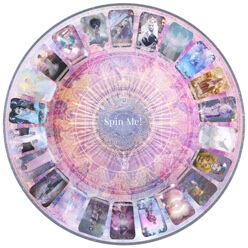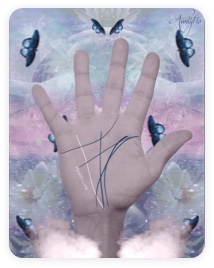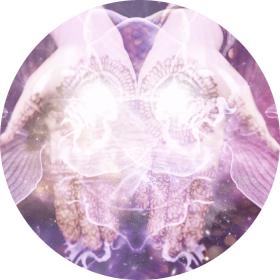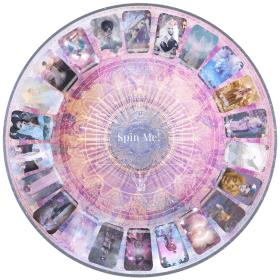Mind Reading

Uncover Hidden Dream Meanings
A telepathic communication between two people has received the name of “Mind Reading” and by some has been regarded as something not quite within the class of real telepathy.
This has been heightened by the fact that we have seen many spectacular exhibitions of pseudo mind-reading, on the TV and on the stage.
It is true to say that imitation or counterfeit mind-reading, in some cases the result has been obtained by trickery, collusion, or clever artifice. Genuine mind-reading is actually a phase of true telepathy and we shall understand this and how to read people’s mind.
What is generally known as mind-reading may be divided into two areas, as follows:
1. There is an actual physical contact between the projector and the receiver.
2. There is no actual physical contact, but where there is a close relationship in space between the two parties, as in the case of the "willing game."
The first area belongs to the case where the projector (of the image or thought) touches the recipient, or at least is connected with him by a material object. In the second area this belongs to cases in which the recipient seeks to find an object which is being thought of by either a single projector, or by a number of persons in the same room.
You will notice that both of these areas were omitted from the experiments of the Society for Psychical Research, because of the possibility of fraud or collusion. But, nevertheless, it is important to learn about both of the areas to acquire proficiency in manifesting this form of telepathy, not alone for its own sake, but, also, because it naturally leads to higher spiritual development.
Reading minds through physical contact
In the case of the first area of mind-reading namely, that in which actual physical contact is had between the projector and the recipient, there has been a disposition on the part of some authorities to explain the whole matter by the theory of unconscious muscular impulse of the projector; but those who have carefully studied this subject, and who have themselves performed this type of mind-reading, know that there is far more than this to it.
Those familiar with the subject know that there is a decided transference of thought-waves from the projector to the recipient, and that the latter actually "feels" the same as they strike upon his mental receiving apparatus. The whole difference between this and the higher forms of telepathy is that in this the thought-currents generally run along the wires of the nervous system, instead of leaping across the space between the two persons.
It is known to all who have conducted this class of experiments, that at times there will be experienced a change or shifting in the transmission of the thought-currents. For a time, the thought-waves will be felt flowing in along the nerves of the hands and arms when, all of a sudden this will cease, and there will be experienced the passage of the current direct from brain to brain. It is impossible to describe this feeling in a few words, to those who have never experienced it. But those to whom it has once been manifested will recognize at once this strange feeling. It is a different sensation from any other in the experience of a human being, and must actually be experienced to be understood. The nearest analogy I can offer is that it is a feeling experienced by a person forgets a name which suddenly flashes or leaps into their consciousness mind—it is felt to come from somewhere outside of the conscious field.
In order to make you understand the distinction between the two areas of mind-reading more clearly, I will say that you may think of one as akin to the ordinary telegraphy over wires; and of the other as akin to wireless telegraphy.
It is the same force in both cases, the difference being simply one of the details of transmission. Fix this idea firmly in your mind, and you will have no trouble in always having the right conception of any kind of case of mind-reading, or telepathy. But, you must remember, there are cases in which there is a combination of both methods of transmission, either simultaneously, or else shifting and changing from one to the other.
The only way of learning is by a half-dozen actual experiments in mind-reading, rather than if you read a dozen books on the subject. It is very good to read the books in order to get the correct theory well fixed in mind, and also in order to learn the best methods as taught by those who have had a wide experience in the subject; but the real "how" of the matter is learned only through actual experience. So, I shall now give you advice and instructions on how to conduct actual experimental work.
Instructions on how to carry out mind reading experiments
The first approach is to ensure that you are firstly the “mind reader” you need to become a good recipient—that is a good "mind reader," allowing others to play the part of projector. Later on, you can play the part of projector, if you so desire, but the real "fine work" is done by the recipient, and, for that reason that is the part you should learn to play by frequent rehearsals.
I advise you to begin your experiments with friends or family who are in sympathy with you, and who are interested in the subject. Avoid particularly all early experiments with uncongenial or unsympathetic persons; and avoid as you would a pestilence all those who are antagonistic either to yourself or to the general subject of telepathy and kindred subjects. As you must make yourself especially "sensitive" in order to successfully conduct a mind-reading test, you will find yourself particularly susceptible to the mental attitude of those around you at such times, and therefore should surround yourself only with those who are congenial and sympathetic.
You will find that there is a great difference between the people who you "try out" as projectors. Some will be more "en rapport" with you than are others who may be equally good friends. "En rapport," means "in vibrational harmony." When two persons are en rapport with each other, they are like two wireless telegraphic instruments perfectly attuned to each other. In such cases there are obtained the very best results. You will soon learn to distinguish the degree of en rapport conditions between yourself and different persons—you soon learn to "feel" this condition. In the beginning, it will be well for you to try several persons, one after the other, in your mind-reading experiments, in order to pick out the best one, and also to learn the "feel" of the different degrees of en rapport condition.
Even in cases of persons in whom the en rapport conditions are good, it is worth establishing a rhythmic unison between you. This is done by both you and the person breathing in rhythmic unison a few moments.
Begin by counting "one-two-three-four," like the slow ticking of a large clock. Have the other person join with you in so counting, until your minds both work in the same rhythmic time. Then you should have him breathe in unison with you, making a mental count with you at the same time, so that you will "breathe together." Count (mentally) "one-two-three-four," as you inhale; the "one-two," holding the breath; and, then "one-two-three-four," exhaling or breathing-out.
Try this number of times, and, you will find that you have established a rhythmic unison between yourself and the other person. In the progress of an experiment, if you should find that the conditions are not as good as might be desired, you will do well to pause for a few moments and re-establish the proper rhythmic harmony by this method of harmonious rhythmic breathing.
Begin by having the projector select some prominent object in the room, a chair, or table for instance. Then have him take your left hand in his right hand. Raise your left hand, held in his right hand, to your forehead; then close your eyes and remain passive a few moments. Have him concentrate his mind intently on the selected object—and will that you should move toward it. Have him think of nothing else except that object, and to will you to move toward it, with all his power. Close your eyes, and quiet your mind, opening your consciousness to every mental impression that he may send you. Instruct him to think not merely "chair," for instance, but rather "there—go there." The main thought in his mind must be that of direction. He must will that you move toward that chair.
After a moment or two, you will begin to feel a vague, general impulse to move your feet. Obey the impulse. Take a few slow steps in any direction that seems easy to you. Sometimes this will take you in an opposite direction from that of the chair, but it will "get you going," and you will soon begin to feel that the direction is "all wrong," and will begin to be mentally pulled in the right direction. You will have to actually experience this feeling, before you will fully understand just what I mean.
After some little practice, you will begin to feel quite distinctly the mental direction, or will-force, of the projector, which will seem to tell you to "come this way—now stop—now turn a little to the right—now a little to the left—now stop where you are, and put out your right hand—lower your hand—move your hand a little to the right—that's it, now you have got it all right." You will soon learn to distinguish between the "no, that's wrong" thought, and the "that's right" one; and between the "go on," and the "come on" one.
By making yourself completely passive, and receptive and obedient to the thought and will-impulses of the projector, you will soon act like a ship under the influence of the rudder in the hand of the projector.
After you have attained proficiency in receiving the mental impressions and directions, you will find yourself attracted or drawn, like a piece of steel to the magnet, toward the object selected. It will sometimes seem as if you were being moved to it even against your own will—and as if someone else were actually moving your feet for you. Sometimes the impulse will come so strong that you will actually rush ahead of the projector, dragging him along with you, instead of having him a little in advance, or by your side. It is all a matter of practice.
You will soon discover the great difference between different projectors. Some of them will be in perfect en rapport condition with you, while others will fail to get into tune with you. Some projectors do not seem to know what is required of them, and usually forget to "will" you to the object. It helps sometimes to tell them that the whole thing depends upon their will power, and that the stronger their will is, the easier it is for you to find the thing. This puts them on their mettle, and makes them use their will more vigorously.
You will soon learn to recognize that peculiar feeling of "all right," that comes when you finally stand in front of the desired object. Then you begin to move your right hand up and down and around, until you get the right "feel" about that also, when you should place your hand on the place which seems to attract you most. You will find that the hand is just as responsive to the mental force, as are the feet. You will soon learn to distinguish between the mental signals: "up," "down," "to the right," "to the left," "stop now, you're right," etc. I cannot tell you just the difference—you must learn to "feel" them, and you will soon become expert in this. It is like learning to skate, run an automobile, operate a typewriter or anything else—all a matter of exercise and practice. But it is astonishing how rapidly one may learn; and how, at times, one seems to progress by great leaps and bounds. Now I shall give you the different stages or steps, which you will do well to follow in your exercises, progressing from the more simple to the more complex—but be sure to thoroughly master the simple ones, before you pass on to the more complex one. Be honest and strict with yourself—make yourself "pass the examination" before promotion, in each and every step.
1. LOCATIONS. Begin by finding particular locations in a room; corners, alcoves, doors, etc.
2. LARGE OBJECTS. Then begin to find large objects, such as tables, chairs, book-cases, etc.
3. SMALL OBJECTS. Then proceed to find small objects, such as books on a table, sofa-cushions, ornaments, paper-knives, etc. Gradually work down to very small objects, such as scarf-pins, articles of jewelry, pocket-knives, etc.
4. CONCEALED OBJECTS. Then proceed to find small objects that have been concealed under other objects, such as a pocket-book beneath a sofa-cushion, etc.; or a key in a book; or a key under a rug, etc.
5. MINUTE OBJECTS. Then proceed to discover very small objects, either concealed or else placed in an inconspicuous place, such as a pin stuck in the wall, etc.; or a small bean under a vase, etc.
The public performers of mind reading vary the above by sensational combinations, but you will readily see that these are but ingenious arrangements of the above general experiments, and that no new principle is involved. As these lessons are designed for serious study and experiment, and not for sensational public performances, I shall not enter into this phase of the subject in these pages. The student who understands the general principles, and is able to perform the above experiments successfully, will have no difficulty in reproducing the genuine feats of the public mind readers, by simply using his ingenuity in arranging the stage-effects, etc. Among other things, he will find that he will be able to obtain results by interposing a third person between the projector and himself; or by using a short piece of wire to connect himself and the projector. Drawing pictures on a blackboard, or writing out names on a slate, by means of thought direction, are simply the result of a fine development of the power of finding the small article—the impulse to move the hand in a certain direction comes in precisely the same way. The public driving feats of the professional mind-reader are but a more complicated form of the same general principle—the impression of "direction" once obtained, the rest is a mere matter of detail. The opening of the combination of a safe, though requiring wonderful proficiency on the part of the operator, is simply an elaboration of the "direction" movement.
Some recipients are, of course, far more proficient than are others; but each and every person—any person of average intelligence—will be able to secure more or less proficiency in these experiments, provided that patience and practice are employed. There is no such thing as an absolute failure possible to anyone who will proceed intelligently, and will practice sufficiently. Sometimes, after many discouraging attempts, the whole thing will flash into one's mind at once, and after that there will be little or no trouble. If you are able to witness the demonstrations of some good mind-reader, professional or amateurs it will help you to "catch the knack" at once.
You will find that these experiments will tend to greatly and rapidly develop your psychic receptivity in the direction of the higher phases of psychic phenomena. You will be surprised to find yourself catching flashes or glimpses of ^higher telepathy, or even clairvoyance. I would advise every person wishing to cultivate the higher psychic faculties, to begin by perfecting himself or herself in these simpler forms of mind-reading. Besides the benefits obtained, the practice proves very interesting, and opens many doors to pleasant social entertainment. But, never allow the desire for social praise or popularity, in these matters, to spoil you for serious investigation and experiment.
By Florance Saul
Jun 14, 2012







